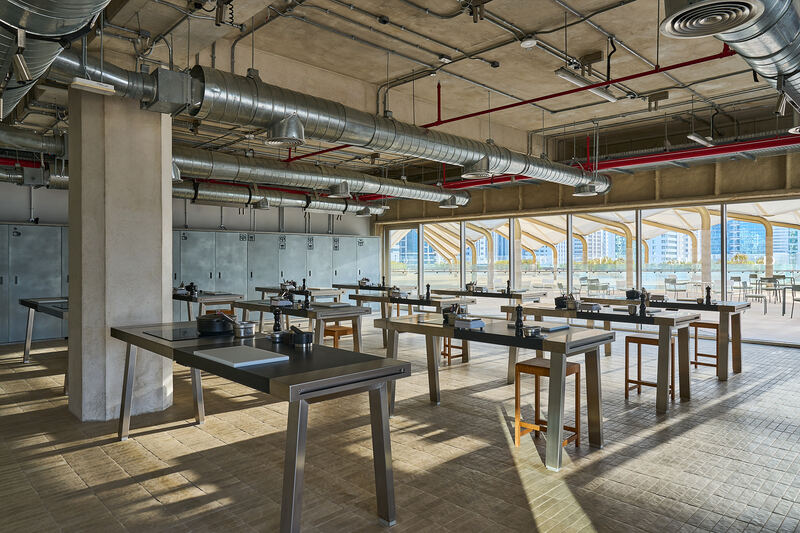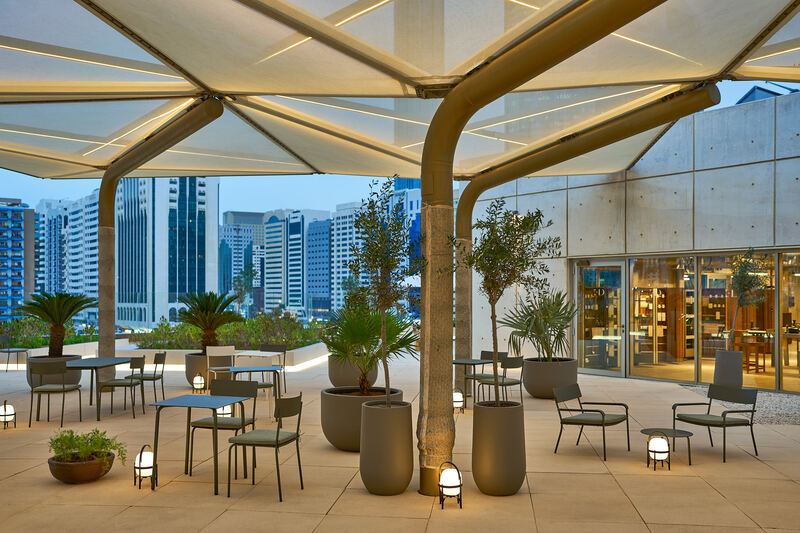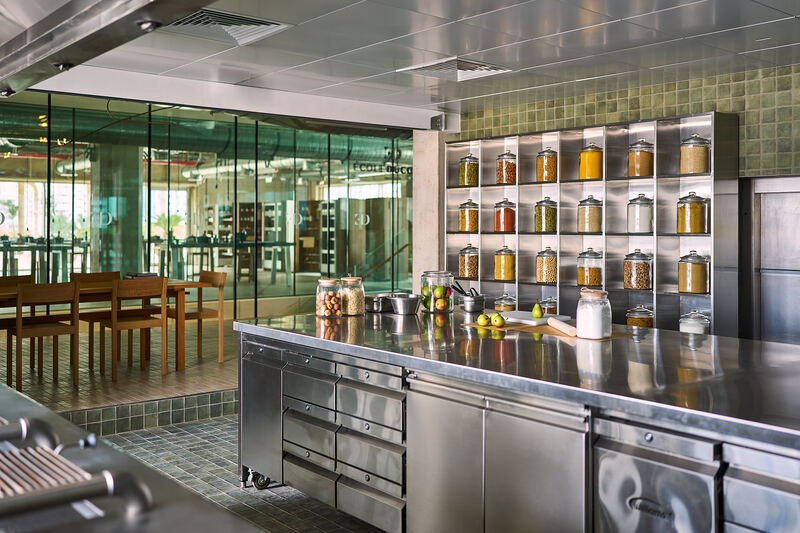Tried and tested: Macaroon masterclass at École Ducasse Abu Dhabi
From entry level enthusiasts to Michelin-pedigree chefs aspiring for global acclaim, the Ecole Ducasse culinary school is here to heat up kitchens across the capital…
“We shouldn’t keep what we know to ourselves if we want to grow and become creators,” star chef Alain Ducasse said recently in an interview. “Sharing of knowledge is essential.”
He was discussing the latest string to his bow: École Ducasse Abu Dhabi Studio, the first Middle Eastern outpost of his acclaimed culinary institute, which opened in December at Cultural Foundation Abu Dhabi. A partnership with Erth Hospitality, it’s a fusion of the French finesse that Ducasse-trained culinary maestros are renowned for, given regional flavour through the local knowledge and talents of Erth Hospitality’s own culinary disruptors.
The result is a creative and educational space that aims to welcome all, from casual cooks looking to improve their at-home skills, to skilled chefs in Abu Dhabi’s top kitchens that wish to hone their craft to Michelin pedigree.
Located on the second floor of the Cultural Foundation, the industrial-feeling, state-of-the-art class studio feels like it’s been plucked straight from the set of a fancy cooking show, with workstations in metal and stone in-built with hobs and neatly arranged with professional pots, pans, and essential utensils.

The space is flooded with natural light that streams in from a wall of floor-to-ceiling windows that opens to the rooftop École Ducasse Café, where food cooked by the masters – rather than the students – is served.

It’s all been very thoughtfully designed, with a neat row of fridges and ovens on one side of the workstations, and a wall of ingredients and extra utensils on the other. Just beyond that, there’s a lovely small lounge area where guests can relax once their work in the kitchen is done and enjoy the fruits (or pastries) of their labour.
There’s also a second side to École Ducasse that’s less like an interactive classroom and designed more as a real-life replica of a professional kitchen, where advanced one-on-one sessions are delivered for trained chefs to have the opportunity to learn from the best.

Back in the classroom, we’re here for one of École Ducasse’s most popular amateur sessions at the studios in Paris, Manila, Bangkok and India: a macaroon masterclass. Tasked with turning us into Ducasse protégé’s is chef Farhat Lahmer, who heads up the Abu Dhabi studio as executive pastry chef. By the time we’ve picked our workstation and aproned up, he’s already weighed out the dry ingredients for our macaroons, and we’re quickly sifting the almond powder, icing sugar and cocoa powder, then whipping up our meringue from egg whites and granulated sugar, before folding the powder into the shaving foam-like egg whites. There’s a printed recipe sheet that’s easy enough to follow, but we enjoy hearing tips and tricks from chef Farhat, who patiently demonstrates each step in a clear and encouraging way, showing us the best way to fold the mixture to retain the air, and the right vigor to put behind the gentle mixing of the ingredients. The next part is one of our favourites, and once we’ve filled the piping bag with the chocolatey mixture and attached the right nozzle, we’re delicately piping each macaroon disk onto a baking tray. Then, we leave them to crust (something chef Farhat tells us many pastry chefs neglect), before putting them in the oven for a precise 14 minutes. During this time, he passionately shows us around the kitchen, discussing some of his own creations (chocolate is his area of expertise) in a way that inspires us to want to return for the chocolate class, before moving on to demonstrating how to make our rich tonka bean ganache for inside the macaroons.
View this post on Instagram
We bring to boil the cream, butter and tonka beans, allowing the beans to infuse with the creamy liquid, before pouring it over disks of milk and dark chocolate in a jug. We whisk it up then let it set, without allowing it to become too firm.
The final act is to put the two parts together, and we get to go back to piping – this time the rich ganache – onto our cooled macaroon shells, making a generous, neat ball of ganache on one half, then covering with a second shell by lightly pressing the two together. It’s somewhat of an art to put the two pieces together without cracking the shell, which takes us several goes to master, but the result pays off, and we leave impressed with our final product.
We’re about to tuck in when chef Farhat gives us his final piece of advice: “You need to refrigerate them overnight for the best consistency and taste,” he smiles, seeing our slightly disappointed looks at having to wait another 24 hours to put them through the taste test. He was right, of course, and the next day we’re rewarded with indulgently chocolatey sweet treats far superior to anything we’ve made in the kitchen before.
